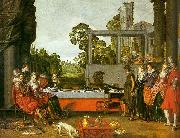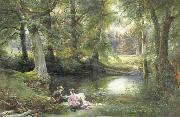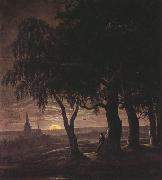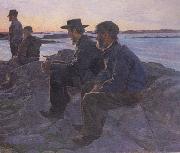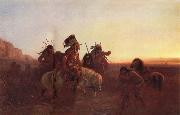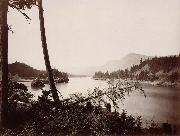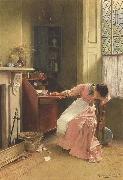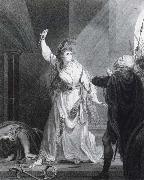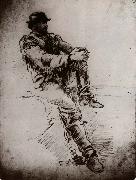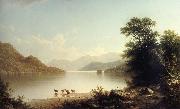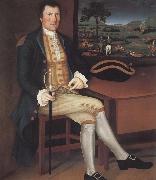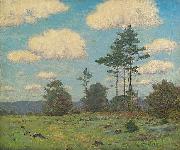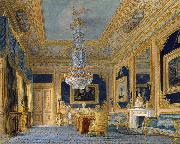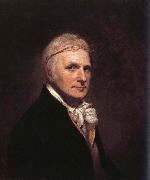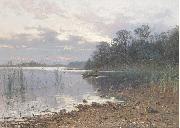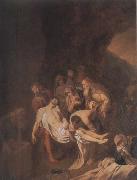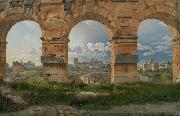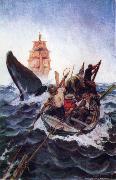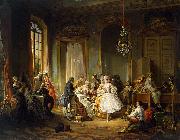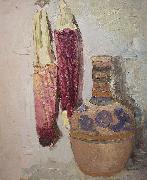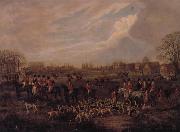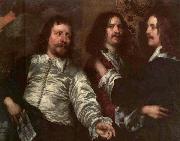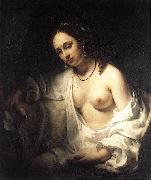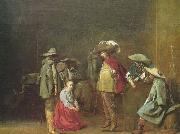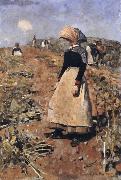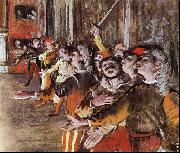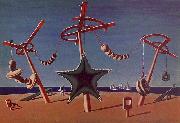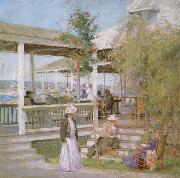|
|
|
|
|
|
|
|
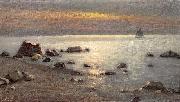 |
Carl Wilhelm Barth
|
|
(1847 - 1919) was a Norwegian painter.
He was born in Christiania. He studied painting under Hans Gude from 1881 to 1883, and having worked as a naval officer until then, he specialized in marine art. He is represented with three works in the National Gallery of Norway.
He was the son of Jacob Bøckmann Barth and brother of Agnar Johannes Barth, both foresters.
|
|
|
|
|
|
|
|
|
|
|
|
|
|
|
|
 |
Caspar van Wittel
|
|
(born Caspar Adriaensz. van Wittel, later a.k.a. Gaspare Vanvitelli, Gasparo degli Occhiali) (1653 - September 13, 1736) was a Dutch Golden Age landscape painter.
Van Wittel was born in Amersfoort. He learned painting first from Thomas Jansz van Veenendaal for 4 or 5 years and then from Matthias Withoos for 7 years, until Withoos left Amersfoort. In Amersfoort, he likely was exposed to Dutch landscape artists such as Jan van der Heyden and Gerrit Berckheyde. His first extant works were made in Hoorn in 1672, but he relocated to Rome with his family ca. 1675 and made his career there. Like his former teacher, he joined the Bentvueghels with the nickname "Piktoors" or "Toorts van Amersfoort"(torch of Amersfort).
He married in Rome in 1697, and stayed most of his life in that city, though, between 1694 and 1710, he toured Italy and painted in places like Florence, Bologna, Ferrara, Venice, Milan, Piacenza and Naples. He is one of the principal painters of topographical views known as vedute.
Gaspar van Wittel died in Rome. His son Luigi would become a famous architect and also carries the italianized family name of Vanvitelli.
In Luigi's biography is written that his father was born in July 1656, but Van Wittel's grave in Rome states that he died at the age of 83 in 1736.
|
|
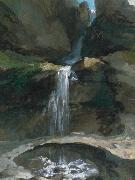 |
Caspar Wolf
|
|
Caspar Wolf (Muri, Aargau, 3 May 1735 - Heidelberg, 6 October 1783) was a Swiss painter, known mostly for his dramatic paintings of Alps. He was strongly influenced by Albrecht von Hallers poem on the Alps, and the Sturm und Drang movement. After 1773 Wolf mostly painted glaciers, caves, waterfalls and gorges.
Wolf was the son of a furniture maker, who was banned from his city. Wolf was trained in Konstanz, between 1753 and 1759 he worked in Augsburg, Munich, Passau as a decoration painter. Not being able to sell his work he went disappointed back to his home town. For Horben Castle he painted by hand the wallpaper on the first floor. In 1768 Wolf lived in Basel. From 1769 till 1771 he stayed in Paris and worked with Philip James de Loutherbourg. In 1774 he moved to Bern. Wolf made a deal with the local publisher Abraham Wagner who had a geological interest, to deliver 200 paintings. He travelled with Wagner or a minister Jakob Samuel Wyttenbach in Berner Oberland and Wallis. From 1780-1781 he was working in Spa, Cologne, Aix-la-Chapelle and Desseldorf. He died in poor circumstances in a hospital.
In 1779 his prints were exposed were Bern but the selling of the book became a failure. Wagner became help from a Swiss army officer in Dutch service and in 1785 30 aquatints were published in Amsterdam. Till 1948 90 of these aquatints were exposed in Keukenhof Castle, but sold. Today these works can be seen in the Kunsthaus in Aarau.
His son Theodor Wolf (1770 - 1818) was a still life painter. |
|
|
|
|
|
|
|
|
|
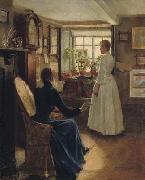 |
Charles W. Bartlett
|
|
(born 1 June 1860 in Bridport, Dorset) was an English painter and printmaker. He studied metallurgy and worked in that field for several years. At age 23, he enrolled in the Royal Academy in London, where he studied painting and etching. After three years of study in London, he entered the private studio school Academie Julian in Paris, where he studied under Jules Joseph Lefebvre (1836-1911) and Gustave Boulanger (1824-1888).
In 1889, he returned to England and married Emily Tate, but shortly thereafter, his wife and infant son died in childbirth. Bartlett then traveled to Europe, spending several productive years in Holland, Brittany and Venice with his friend and fellow artist Frank Brangwyn (1867-1956). Brangwyn is believed to have introduced Bartlett to Japanese prints. Bartlett produced some of his most important early works on the Continent, especially studies of peasants painted in broad areas of color. He was invited to join the Societe Nationale des Beaux-Arts in France in 1897. In 1898, he returned to England and married Catherine Kate Main. |
|
|
|
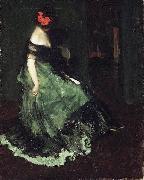 |
Charles Webster Hawthorne
|
|
(January 8, 1872 - November 29, 1930) was an American portrait and genre painter and a noted teacher who founded the Cape Cod School of Art in 1899.
He was born in Lodi, Illinois and his parents returned to Maine, raising him in the state where Charles' father was born. |
|
 |
Charles Wellington Furse
|
|
(January 13, 1868 - October 16, 1904) was an English painter.
He was born at Staines, the son of the Rev. C. W. Furse, archdeacon of Westminster, and rector of St John's, Smith Square and descended collaterally from Sir Joshua Reynolds; and in his short span of life achieved such rare excellence as a portrait and figure painter that he forms an important link in the chain of British portraiture which extends from the time when Van Dyck was called to the court of Charles I into the 20th century.
His talent was precocious; at the age of seven he gave indications of it in a number of drawings illustrating Scott's novels. He entered the Slade School in 1884, winning the Slade scholarship in the following year, and completed his education at Julians Atelier in Paris. Hard worker as he was, his activity was frequently interrupted by spells of illness, for he had developed signs of consumption when he was still attending the Slade school. An important canvas called Cain was his first contribution (1888) to the Royal Academy, to the associateship of which he was elected in the year of his death. For some years before he had been a staunch supporter of the New English Art Club, to the exhibitions of which he was a regular contributor.
In October 1900 he married Katharine Symonds, the daughter of John Addington Symonds. She later became known as Dame Katharine Furse. The couple had 2 sons. His fondness for sport and of an open-air life found expression in his art and introduced a new, fresh and vigorous note into portraiture. There is never a suggestion of the studio or of the fatiguing pose in his portraits. The sitters appear unconscious of being painted, and are generally seen in the pursuit of their favourite outdoor sport or pastime, in the full enjoyment of life. Such are the Diana of the Uplands, the Lord Roberts and The Return from the Ride at the Tate Gallery; the four children in the Cubbing with the York and Ainsty, The Lilac Gown, Mr. and Mrs. Oliver Fishing and the portraits of Lord Charles Beresford and William Johnson Cory.
Most of these pictures, and indeed nearly all the work completed in the few years of Furse's activity, show a pronounced decorative tendency. His sense of space, composition and decorative design can best be judged by his admirable mural decorations for Liverpool town hall, executed between 1899 and 1902. A memorial exhibition of Furse's paintings and sketches was held at the Burlington Fine Arts Club in 1906.
|
|
|
|
|
|
 |
Charles William Mitchell
|
|
(1854 - 1903) was an English Pre-Raphaelite painter from Newcastle. A contemporary of John William Waterhouse, his work is similar in many ways. His one famous piece was Hypatia, shown in 1885 and likely inspired by the Charles Kingsley serialized novel Hypatia or New Foes with an Old Face. This painting is currently in the Laing Art Gallery. |
|
|
|
|
|
|
|
|
|
|
|
|
|
|
|
|
|
|
|
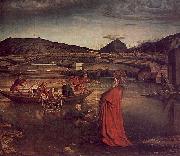 |
Conrad Witz
|
|
1400-1446 German
(Resident in Switzerland)
Conrad Witz Gallery |
|
|
|
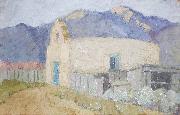 |
Cordelia Creigh Wilson
|
|
(28 November 1873, Georgetown, Colorado - 7 June 1953, Seattle, Washington) was a painter noted for her landscapes of New Mexico and the American Southwest.
Cordelia "Cordie" Creigh was born in Clear Creek County, Colorado. Her father died in her early childhood, and she was raised by her mother, Emma Creigh who shuttled the family between Winfield, Kansas and Colorado. She married Willard Wilkinson in Boulder, Colorado in 1897 and gave birth to her only child, Louise, in Hayden the next year, however, the couple divorced shortly after the turn of the century.
Cordelia then began to seriously develop her skills as an artist motivated by latest trends in American realism led by Robert Henri. Her academic training emphasized development of an alla prima technique and painting out of doors, which inspired her to produce bold impasto works quickly. She started making road trips to New Mexico and became friends with painters in the Taos Society of Artists and the Santa Fe art colony. Her numerous expressive oil sketches and en plein air canvases of adobe dwellings and rugged landscapes caught the attention of art dealers.
Before the end of the First World War, Cordelia married John H. Wilson and took his surname for her entire professional career. They settled on Tremont Street in Denver, just around the corner from the J. Gibson Smith Gallery which displayed and sold her works. Many of her paintings had frames she hand-carved in rustic Arts and Crafts style and gilded with sheets of gold leaf.
In 1917, Cordelia Wilson was honored by having two paintings selected for the inaugural exhibition of the new New Mexico Museum of Art in Santa Fe. The show featured easel works by George Bellows, Robert Henri, F. Martin Hennings, and Leon Kroll, who were working in the Southwest at that time, along with the "Taos Six" (Oscar Berninghaus, Ernest Blumenschein, Irving Couse, Herbert Dunton, Bert Geer Phillips, and Joseph Henry Sharp) and other members of the Taos Society. One of her paintings exhibited in the show, A Mexican Home, was reproduced in the January CFebruary 1918 issue of the journal Art and Archaeology (published by the Archaeological Institute of America) that featured a cover article about the museum's opening.
Among Cordelia Wilson's largest landscapes is a 50" x 70" canvas, created for World War I military training. It was exhibited at the School of American Research of Santa Fe in 1917 with other large-scale so-called "Range Finder" paintings by Blumenschein, Berninghaus, Phillips, Gustave Baumann, Walter Ufer, Leon Gaspard, and others. They had been commissioned by the U.S. Army based on a proposal by the Salmagundi Club of New York, whose members wanted to make a special contribution to America's war effort. When the show closed, the works on display were shipped to Camp Funston at Fort Riley, Kansas and Camp Cody at Deming, New Mexico. The paintings were used for indoor instruction in range finding, topographical quizzes, and map drawing at Army camps.
John Wilson, her husband, contracted tuberculosis in about 1921. The couple moved to the Seattle for his treatment at a sanitorium, where he passed away the following year. In 1923, Cordelia married for a third time to John N. Fahnestock, but this marriage ended in divorce in 1928. Cordelia continued to reside in Pacific Northwest producing still lifes, florals, and scenes of the Puget Sound region, although she periodically traveled, worked, and displayed her art in the Southwest. |
|
|
|
|
|
|
|
|
|
|
|
|
|
|
|
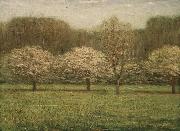 |
Dwight William Tryon
|
|
(August 13, 1849 - July 1, 1925) was an American landscape painter in the late 19th and early 20th centuries. His work was influenced by James McNeill Whistler, and he is best-known for his landscapes and seascapes painted in a tonalist style.
Tryon was born in Hartford, Connecticut. His father was killed in a gun accident before Tryon reached four years of age, and Tryon was raised by his mother on his grandparent's farm in East Hartford. His interest in art evolved naturally. As a young man Tryon took a job at a prominent Hartford bookstore and studied art instruction manuals from the store shelves. He also took to sketching the surrounding countryside during his off hours
Tryon sold his first painting in 1870. After exhibiting and selling work locally, he successfully exhibited at the National Academy of Design in 1873. His artistic convictions affirmed, Tryon married, quit his job at the bookstore and became a full-time artist. Some of his first works from this period are seascapes and harbor views executed in a luminist manner. Soon after, however, Tryon's style shifted towards the Barbizon school, which was then becoming popular among American artists. He may have been influenced by the works of George Inness and Alexander Helwig Wyant.
In 1876 Tryon decided to advance his skills through a formal study of art. He sold all of his paintings at auction and, with the help of a benefactor, traveled to France with his wife. He enrolled in the atelier of Jacquesson de la Chevreuse, and took classes at the École des Beaux-Arts. He also received instruction from Charles-François Daubigny, Henri Harpignies, and Jean Baptiste-Antoine Guillemet. Impressionism was blossoming in France all around Tryon, but he was not swayed by the new style and remained comfortably within the realm of the Barbizon school.
Tryon traveled and sketched Europe with his wife, and met Abbott Handerson Thayer and his wife with whom he became friends. He returned to the United States in 1881 and settled in New York City where he taught and painted landscapes. In New York, Tryon became friends with artists Robert Swain Gifford and Thomas Dewing. He became an early member of the Society of American Artists and continued to exhibit paintings to the National Academy of Design. He also became a member of the American Water Color Society and the National Institute of Arts and Letters (now The American Academy of Arts and Letters).
On the advice of Gifford, Tryon and his wife built a summer house in South Dartmouth, Massachusetts in 1887. Though he would continue to spend each winter in New York City, South Dartmouth became Tryon's home for the rest of his life. The coastal area appealed to Tryon's aesthetic sensibilities and allowed him to indulge in fishing, his favorite pastime.
By the late 1880s Tryon began painting landscapes in what would become his mature and iconic style. Working most often in oil, Tryon's paintings typically feature a group or broken row of trees in the middle distance, often colored in an autumnal hue, separating a glowing sky above and a foreground marsh or pasture below. He also continued to paint the sea in his mature career, often employing pastel to show a bare expanse of water, sky and beach in various weather and light. He exhibited his works nationally but tended to favor The Pennsylvania Academy of Fine Arts in Philadelphia and the Montross Gallery in New York.
A Detroit industrialist, Charles Lang Freer, first bought a painting by Tryon in 1889 and became Tryon's most important patron. Freer eventually bought dozens of Tryon's paintings, including many of his best works, and worked closely with Tryon in the interior design of his Detroit home. Freer, a major collector of Asian art and works by James McNeill Whistler, went on to establish the Freer Gallery of Art, part of the Smithsonian Institution in Washington, DC, where many works by Tryon can be seen today.
Took the coveted First Prize for his painting Salt-Marsh, December at the Tennessee Centennial Exposition that was held in Nashville, Tennessee in 1897. He is described in the "Fine Art Catalogue" which is copyrighted by Theodore Cooley as follows: William Tryon is an American landscape painter whose pictures are greatly sought for their delicacy of coloring and refinement of feeling. A pupil of Daubdigny, he is, like that artist, a painter of country life - the idyllic rusticity of apple trees in bloom, of waving cornfields, of shining valleys and streams rippling gently to the sea. He is especially fine in the silvery-gray atmosphere.
In addition to his painting, Tryon taught at Smith College from 1886 to 1923, visiting part time to critique students' work and, late in his career, establishing the Tryon Gallery of Art. He died of cancer in South Dartmouth on July 1, 1925.
|
|
|
|
|
|
|
|
|
|
|
|
|
|
|







